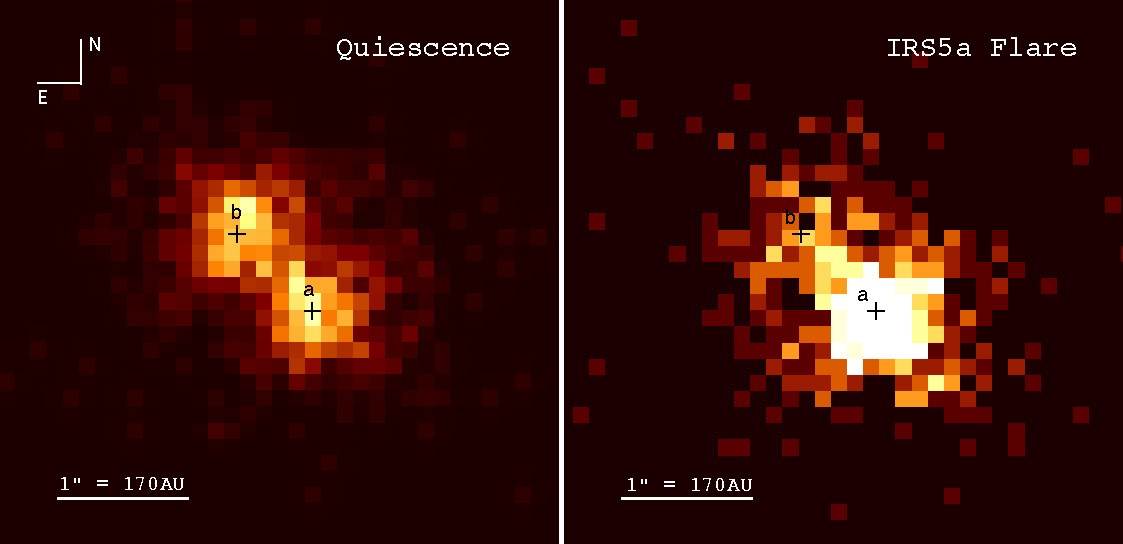
 Credit:K. Hamaguchi et al.; NASA
Credit:K. Hamaguchi et al.; NASA
Resolving Their Differences
The young can grow close, but they can also grow apart. Take any two stars: no matter how similar their upbringing, significant differences can arise in their tastes and temperments. This was clearly demonstrated by an observation with the Chandra X-ray Observatory of two young stars named IRS 5a and 5b in a stellar nursery called the R Corona Australis molecular cloud. These stars are so young and (astronomers think) so close that they must have very similar environmental properties. But apparently they have very different X-ray characteristics. The image above left shows the Chandra image of X-rays emitted from IRS 5a and 5b; on the right is the X-ray emission from the same two stars, but now IRS 5a is significantly brighter than IRS 5b. Evidently IRS 5a is a bit more erratic than its young companion, and prone to strong X-ray flaring. Observations like these are helping astronomers understand how flaring in young stars depends on factors like stellar rotation and magnetic fields. These observatsions also help them figure out how high-energy X-rays from young stars can condition the disks which surround them and from which planets form.
Published: July 14, 2008
<
HEA Dictionary ● Archive
● Search HEAPOW
● Other Languages
● HEAPOW on Facebook
● Download all Images
● Education ● HEAD
>
Each week the HEASARC
brings you new, exciting and beautiful images from X-ray and Gamma ray
astronomy. Check back each week and be sure to check out the HEAPOW archive!
Last modified Tuesday, 27-Feb-2024 10:10:09 EST


